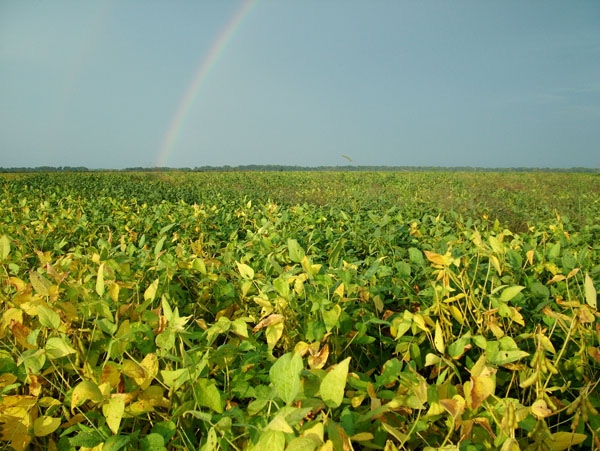
Cercospora blight can be a problem in soybeans
Cercospora blight, the No. 1 disease that Louisiana soybean growers have to deal with year-in and year-out, is “a booger to manage,” says Boyd Padgett, plant pathologist at the LSU AgCenter. “There are no silver bullets, no single management practice for dealing with this disease,” he said at the annual conference of the Mississippi Agricultural Consultants Association at Mississippi State University.

Cercospora blight, the No. 1 disease that Louisiana soybean growers have to deal with year-in and year-out, is “a booger to manage,” says Boyd Padgett, plant pathologist at the LSU AgCenter.
“There are no silver bullets, no single management practice for dealing with this disease,” he said at the annual conference of the Mississippi Agricultural Consultants Association at Mississippi State University.
It is present in fields somewhere in the state every year, he says, “but when it shows up and the impact it has on yield can vary. Usually, environment is the limiting factor in the amount of disease you have, or if you have disease at all.”
And identification can sometimes be a challenge, Padgett notes.
 “When scouting fields, it’s important to remember that everything that looks like a disease isn’t, and everything that looks like cercospora blight isn’t.
“When scouting fields, it’s important to remember that everything that looks like a disease isn’t, and everything that looks like cercospora blight isn’t.
“I never thought soybean rust could look like cercospora blight, but we’ve looked at a lot of soybean rust and it can indeed resemble cercospora blight. So, be aware that you can have two different diseases with similar symptoms.”
Cercospora blight develops best in moderate temperatures, 68 to 86 degrees Fahrenheit, he says, and needs about 8 to 24 hours of leaf wetness.
“The fungus can be seedborne. It can overwinter on plant debris, so if you’re growing beans reduced or no-till or beans behind beans, this increases the risk for this disease. Cercospora can also be windblown.”
Stress can increase disease potential
The more stress soybean plants are under, the more potential there is for cercospora blight, Padgett says.
“It can infect seedlings, and because it needs sunlight for activation, late-season foliar symptoms will almost always show up in the upper leaf canopy.
“Initial foliar symptoms occur in early to mid-reproductive growth stages and appear as dark, chocolate brown lesions on leaf petioles. As it progresses under favorable conditions, the disease may continue to develop, there’ll be yellowing of leaves, and then what looks like deposits of cigarette ashes on the upper surface of the leaves. The spores can then be blown all across the field and even to your neighbor’s fields.”
Final stages of the disease can result in premature defoliation, Padgett says, and the more severe and longer the disease is prior to pod fill, the greater the yield loss.
“The populations of this fungus are extremely diverse. There are soybean varieties with some resistance, but none with immunity.
“Frogeye leaf spot is a cousin to cercospora foliar blight, and there are reports of field resistance of frogeye to strobilurin chemistry in Illinois, Kentucky, and Tennessee. Thus far, we have not seen this in Louisiana.”
To manage for cercospora blight, Padgett says, growers should select high-yielding varieties that incorporate resistance, then apply a fungicide, or combination of fungicides, with a sprayer properly calibrated for optimum coverage.
“Set your sprayer for maximum coverage — coverage is key. Remember: a good fungicide applied badly yields bad results.
“R-1 is probably a bit too early for a fungicide application. From R-3, pod initiation, to R-4, pod elongation, is probably the best time for this application.
“Headline, TopsinM, TM85, and Quadris fungicides offer moderate control of cercospora blight. What’s new in disease control? Gem from Bayer is a new strobilurin fungicide. Syngenta has Quilt Xcel, which is a new formulation of Quilt.”
About the Author(s)
You May Also Like



